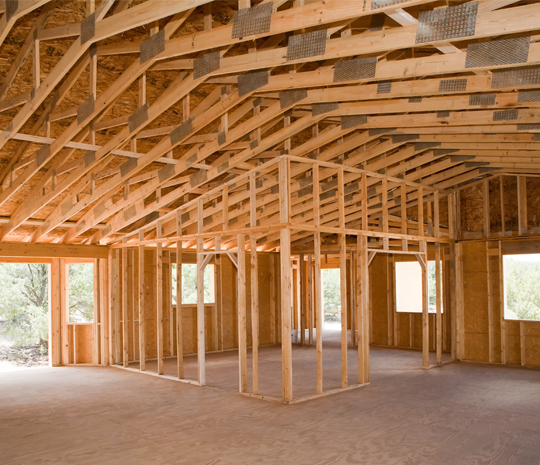The American Wood Council (AWC) is committed to ensuring a safe, resilient, and sustainable built environment. They are responsible for the development of codes, standards and regulations, sustainability data, design tools, and guidelines for wood construction that allow for the appropriate and responsible manufacture and use of wood products.
This ensures that building codes and other standards and regulations remain receptive and favorable to wood. In support, the AWC develops and disseminates consensus standards, comprehensive technical guidelines, and tools for wood design and construction, as well as providing education on their application.
Codes and standards work grows opportunities for light-frame construction and mass timber.
In the face of stiff competition from alternative materials in both residential and non-residential construction, AWC’s engineers and building and fire-code experts work to maintain and expand market opportunities for wood. The AWC led, with funding support from the SLB and U.S. Endowment for Forestry and Communities, the successful industry effort for taller mass timber buildings up to 18 stories in the 2021 and 2024 International Building Code.
The AWC is widely acknowledged as a highly credible source of information. It has a proven track record in engaging U.S. building and fire officials in understanding the structural and fire performance of the industry’s products, ensuring stability and growth in a code-regulated construction marketplace.
Telling wood’s sustainability story with data and transparency.
The SLB provides the AWC with funding to increase the industry’s capacity and capability in areas such as sustainability, developing voluntary consensus standards, green building, energy, and driving broad acceptance of wood products.
The AWC is making major strides in gathering wood product sustainability data to provide the transparency that the building design community demands for material specification. Through improved data collection, the AWC is producing new regional softwood lumber Environmental Product Declarations in 2024 representing a much larger portion of lumber volumes in each region. The AWC has also created an online wood sourcing tool to help designers learn more about the sustainability of U.S.-sourced softwood lumber.
With a variety of domestic and international sustainability standards in the market, the AWC is integrally involved in shaping those standards to address how carbon in the built environment is accounted for and provide education on a whole building life cycle assessment (WBLCA) approach. These efforts show the important environmental impact of wood’s sustainability and the role wood can play in reducing the carbon footprint of our buildings.


